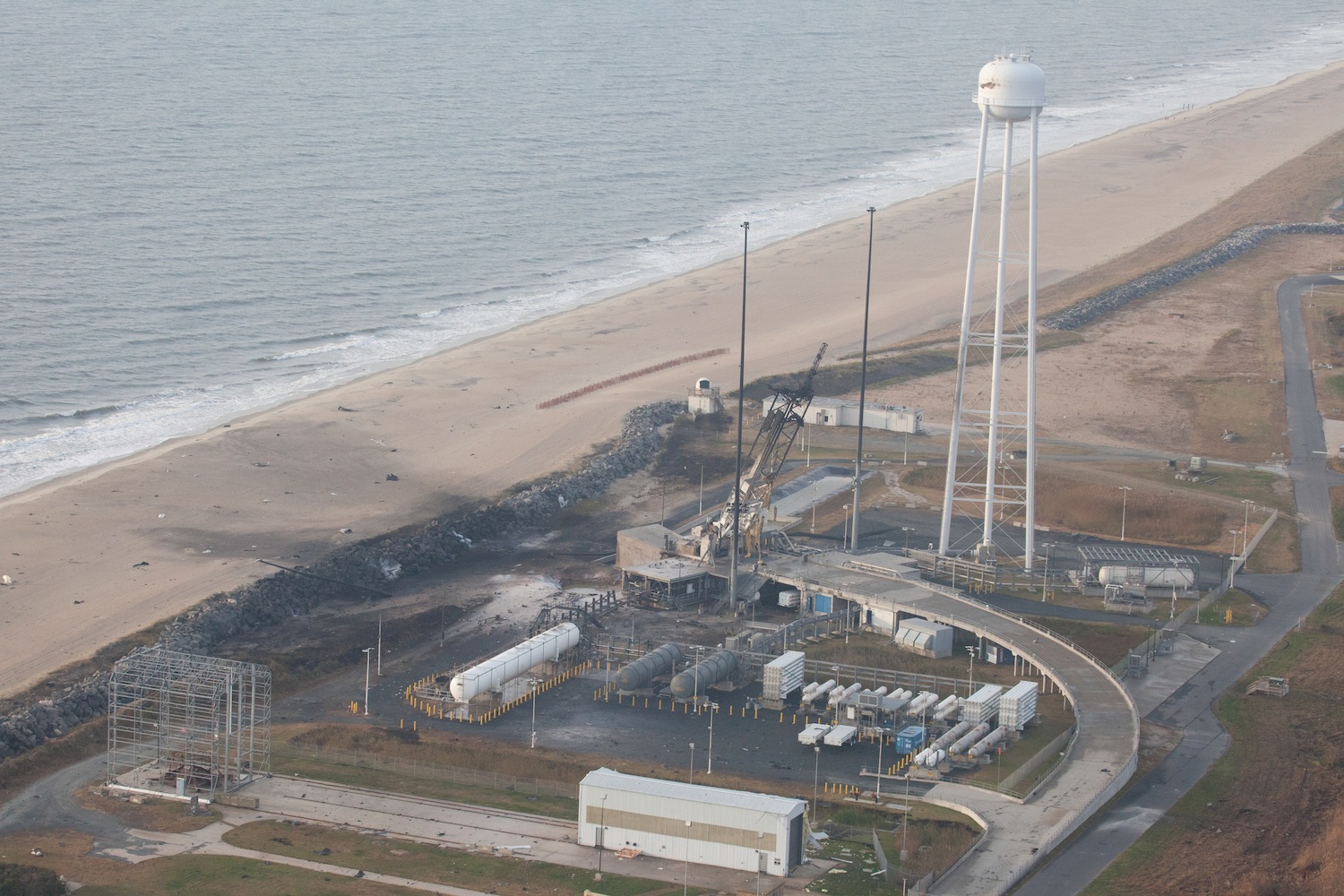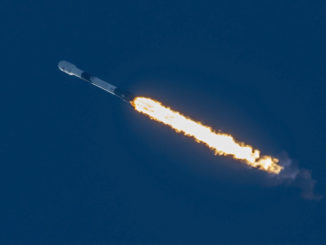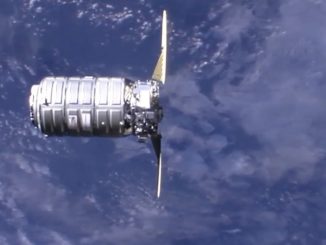
Initial inspections of the Antares rocket’s launch pad in Virginia revealed the facility escaped major damage after sustaining nearly a direct hit from the booster as it fell to the ground in flames seconds after liftoff Tuesday.
Aerial photos released by NASA show the area around launch pad 0A — the starting point for Tuesday’s doomed Antares rocket mission — blackened and littered with debris.
Two of the launch facility’s four lightning protection towers were toppled in the fiery crash, but the pad’s 307-foot-tall water tower remains standing.
Even the rocket’s transporter, which routes electrical and fueling umbilicals to the launcher, survived the fireball as the booster impacted the ground feet from the pad’s launch mount.
“After up close visual inspections by the safety team, it still appears the launch site itself avoided major damage,” Orbital Sciences Corp., the company that built the Antares rocket, said in a statement Thursday.
“There is some evidence of damage to piping that runs between the fuel and commodity storage vessels and the launch mount, but no evidence of significant damage to either the storage vessels or launch mount,” Orbital’s statement said.
Pressurized tanks near the launch pad hold kerosene fuel, liquid oxygen, helium pressurant and other gases for the rocket.
The launch pad is owned by the Mid-Atlantic Regional Spaceport, or MARS, an agency run by the state of Virginia. The complex sits on federal property owned by NASA’s Wallops Flight Facility.
In an update released Wednesday, NASA said they found broken windows and imploded doors on a number of support buildings near the launch pad after cursory look at the area.
“A sounding rocket launcher adjacent to the pad, and buildings nearest the pad, suffered the most severe damage,” NASA said.
The Wallops launch pads are located on an island across a marsh from the mainland, where ground controllers oversee rocket launches and observers gather to watch the liftoffs.
“Preliminary observations are that the environmental effects of the launch failure were largely contained within the southern third of Wallops Island, in the area immediately adjacent to the pad,” NASA officials said.
More detailed damage assessments are planned over the next few days, Orbital said.
Officials have already started the laborious task of finding, collecting and analyzing chunks of the rocket strewn across Wallops Island and into the Atlantic Ocean.
Items identified so far include equipment from the Cygnus cargo ship destroyed in Tuesday’s launch failure. The spacecraft was packed with about 5,000 pounds of supplies and experiments for the International Space Station.
“Based on initial sweeps conducted by an Orbital safety team, it appears a significant amount of debris remains on the site and it is likely substantial hardware evidence will be available to aid in determining root cause of the Antares launch failure,” Orbital said. “Some of the Cygnus cargo has also been found and will be retrieved as soon as we have clearance to do so to see if any survived intact.”
Engineers have already started cataloging and documenting the locations of fragments of the vehicle, officials said.
The debris will be relocated to storage bays on the island for further evaluation, according the Orbital Sciences statement.
Follow Stephen Clark on Twitter: @StephenClark1.



